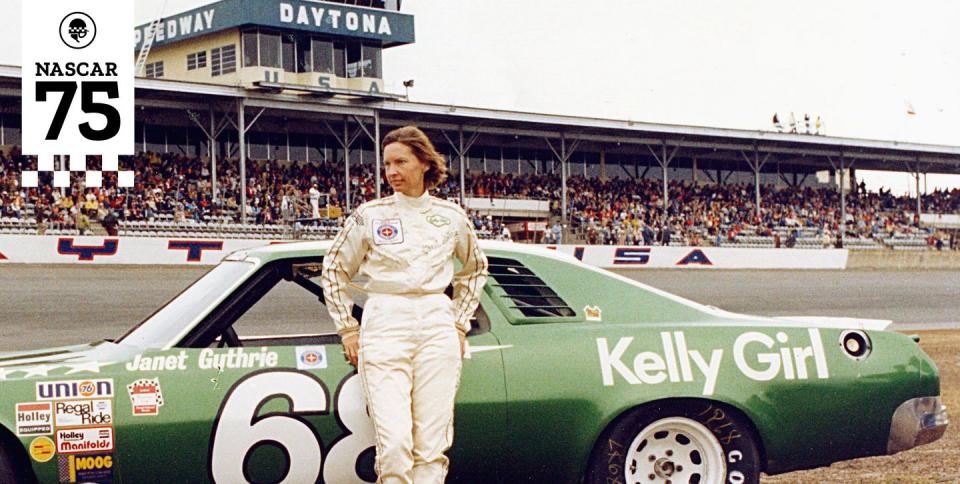Janet Guthrie Crashes Through NASCAR's Glass Ceiling at Daytona 500 in 1977

The most notable achievement of Guthrie’s career in stock car racing was becoming the first female driver to qualify and compete in NASCAR’s biggest race, the Daytona 500 in 1977.
She started the Daytona 500 39th in the 42-car field and finished an impressive 12th, earning Rookie of the Year honors.
Just over three months later, she doubled-up and rewrote another chapter of motorsports history by becoming the first female driver to qualify for and compete in the Indianapolis 500.
Danica Patrick may have been the most talked-about female racer in modern-day NASCAR, but she wasn’t even around when Janet Guthrie became the most talked-about female in NASCAR history.
Born in Iowa and raised in New York, Guthrie took part in 33 NASCAR Winston Cup events from 1977 to 1980, while Patrick wasn’t even born until March 25, 1982.
The most notable achievement of Guthrie’s career in stock car racing was becoming the first female driver to qualify and compete in NASCAR’s biggest race, the Daytona 500 in 1977. She started the race 39th in the 42-car field and finished an impressive 12th, earning Rookie of the Year honors.

But that wasn’t enough for Guthrie. Just over three months later, she doubled-up and rewrote another chapter of motorsports history by becoming the first female driver to qualify for and compete in the Indianapolis 500 (started 26th and finished 29th in the 33-car field, completing just 27 of the scheduled 200 laps due to engine failure). She had previously tried to qualify for the 1976 edition of the Indy 500 but failed to make the 33-car field.
Guthrie never competed in a full NASCAR season. Her highest finish was sixth at Bristol in 1977—earning a prize of $2,200—finishing ahead of such stars as Richard Petty, Buddy Baker, Neil Bonnett, Bobby Allison, Ricky Rudd and even future team owner Richard Childress.
Danica Patrick would eventually tie Guthrie for the career-best finish by a female in NASCAR Cup history with her own sixth-place finish at Atlanta in 2014.
In addition to her NASCAR exploits, Guthrie, a college-trained aerospace engineer and pilot, would make 11 career IndyCar starts, including three starts at Indianapolis (best finish in the 500 was ninth in 1978), and ended her open-wheel career with a career-best fifth at Milwaukee in 1979.
While Guthrie was blessed with great talent, she fought two enemies that at times proved insurmountable, and which ultimately led to such short careers in both NASCAR and IndyCar: funding and discrimination.
While she was accepted and welcomed in the sports car world, where she had significant success for several years before moving to NASCAR and IndyCar, Guthrie was ostracized by many fellow drivers in both series—all because she was a female. While some of her rivals may have been afraid of her talent, others simply didn’t want to lose to “a girl.”
And as a result of the discrimination, Guthrie had a hard time attracting major sponsorship that would have helped her race more in both series.
Guthrie will turn 85 on March 7, and has lived the last several decades in Aspen, Colorado. She was married to the love of her life, fellow airline pilot Warren Levine, from 1989 until Dec. 30, 2006, when Levine passed away from a heart attack.
Guthrie has been inducted into a number of different racing halls of fame and museums, and her 1977 Indy 500 fire suit and helmet are enshrined at the Smithsonian Institution in Washington, D.C.
Follow Autoweek contributor Jerry Bonkowski on Twitter @JerryBonkowski

 Yahoo Autos
Yahoo Autos 